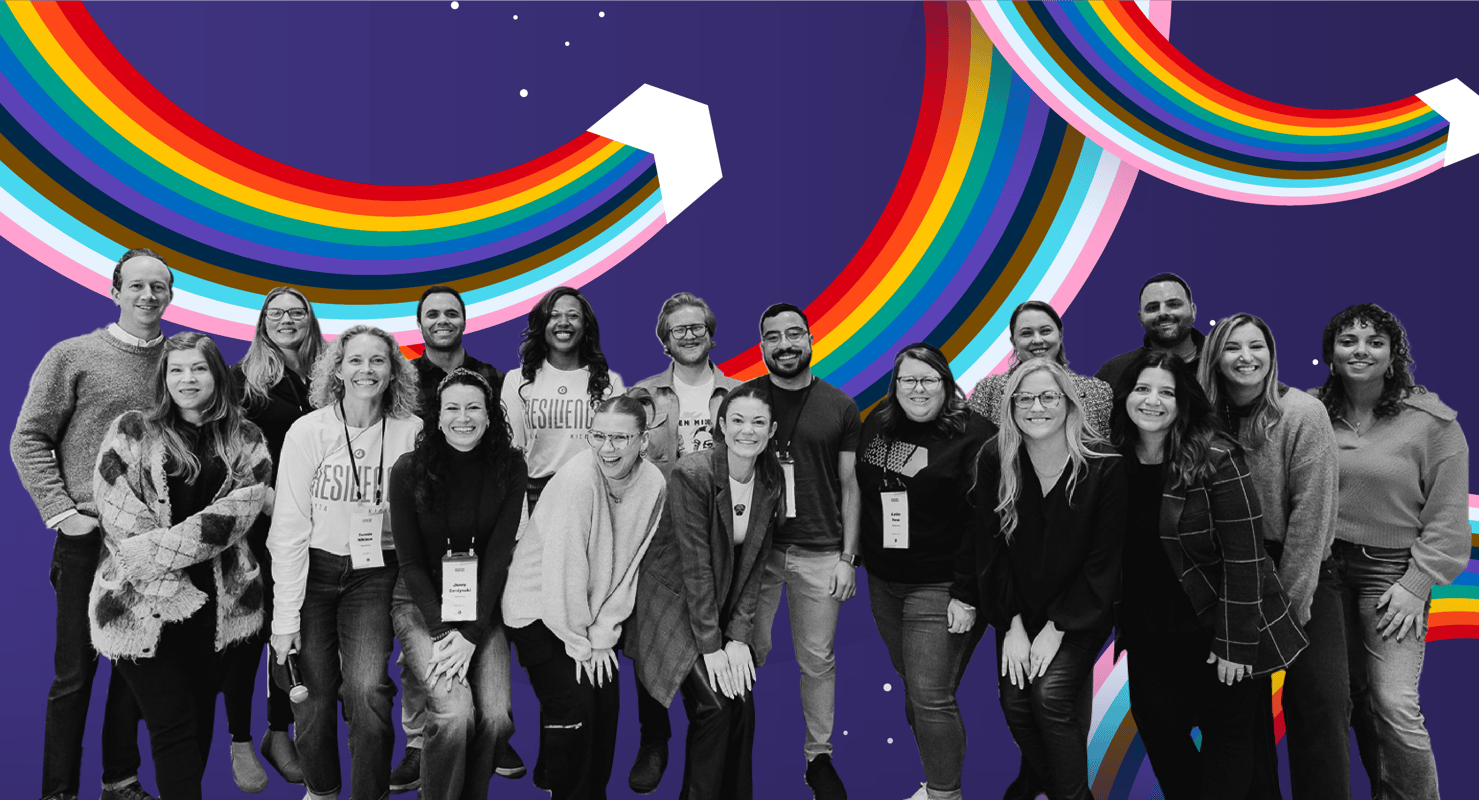“Out at work.”
For some LGBTQIA+ folks, this idea is terrifying. For others, it feels like a sigh of relief. The mixed emotions around coming out at work are often a source of anxiety for LGBTQIA+ people. Just because you are “out” unfortunately does not mean your team or your company will always welcome your news with joy.
This Pride month, I want to take a deeper look at how LGBTQIA+ people show up in the workplace and consider if “out at work” is still the standard we aspire to, or if there is something else we should be striving for.
Coming out anywhere is a (big!) step LGBTQIA+ people take for themselves to show up authentically, but there are varying reactions and levels of acceptance from the people around us — including families, friends, neighbors, communities, and coworkers. In the workplace, company culture and discrimination policies contribute greatly to how LGBTQIA+ people show up and in many cases, impact their ability to reach their full potential and maximize their contributions to an organization.
My experience
I remember the first time I came out at work, working for a conservative financial investment firm in 2009. It wasn’t easy. But I was graduating from college at that time and came out to everyone else in my life four years prior, so “not being out,” wasn’t really an option for me. Having to give ambiguous answers about my weekends or not bringing a date to the company holiday party was just not a world I wanted to live in any longer. At this stage of life and in that environment, being “out at work” felt like an accomplishment, but 14 years later, a lot has changed legally, culturally, and personally. As an LGBTQIA+ person, I’ve wondered if “out at work” is still good enough.
The Three Levels of Coming Out
Here is a look at three varying levels of coming out – and acceptance – in the workplace.
- Out at work. Hooray! You’ve made the decision to share your sexual orientation or gender identity with your coworkers. Reaching this decision might have been fraught, but… you did it. The responses and reactions from your teammates might vary from positive, to negative, to no response at all, but what’s important is that as an LGBTQIA+ person, you’ve shared your authentic truth with the people you’ve chosen. Hopefully this is the end to awkward conversations about dating, identity, or partner status — but in some organizations, it might just be the beginning.
- Accepted at work. Moving up the ladder after coming out at work - not only have you shared with your company and/or coworkers that you identify as LGBTQIA+, but they have responded to your news and accepted what you’ve shared. The difference between the first and second stages is acknowledgement and acceptance. What does this look like for the LGBTQIA+ person at work? Team members might thank you for coming out to them or have follow up questions about your gender identity or sexuality depending on what you’ve shared. These discussions can require some amount of education and usually take place with people who seek to connect with you and better understand. In rare instances, those conversations can be uncomfortable and unprofessional, but I believe with respect and a desire to learn, they can almost always be positive.
- Equal at work: This is where I hope more organizations and more LGBTQIA+ employees will be in the future – and one of the reasons I am so happy to be a part of the G2 team! Being equal at work means companies recognize and support LGBTQIA+ employees just the same as others - no hiding, no marginalization, no discrimination, no closed-door conversations, and no second-tier status. Employee resource groups can advocate for LGBTQIA+ causes and create community for teammates, people of different sexual orientations and gender identities are encouraged to apply and are treated as valued team members once they join, partners are never turned down as +1s for company events, and some organizations might even have fertility assistance programs to help LGBTQIA+ employees have families. The list of inclusive, equal benefits for LGBTQIA+ people at “equal at work” organizations is much longer than just those few things and continues to evolve today. In such companies, the core principles are the same: LGBTQIA+ people feel equal, welcome, valued, safe, and supported.
The correlation between authenticity and performance
In my career, I’ve been “out at work,” “accepted at work,” and “equal at work” before and perhaps the most important thing organizations should consider as they shape their culture or policies on LGBTQIA+ people in the workplace is how to maximize their potential. Working in places where I was tolerated, accepted, or celebrated certainly impacted my performance and contribution to those companies. When I had to hide parts of my life or myself, I became more guarded and less inviting with my colleagues. I did what it took to “meet expectations” because I was afraid of getting too close to people who might ask questions I wasn’t ready to answer. I shied away from after-hours events and was uncomfortable talking about family or friends. Ultimately, I wasn’t showing up to work as my authentic self.
Conversely, when I felt fully embraced, valued, and equal, I was able to show up authentically, perform at my highest potential, and deliver maximum results for my team. “Equal at work” organizations are where I made the greatest strides in my career, learned the most from those around me, and progressed to where I am today. G2 is an “equal at work” company that doesn’t just recognize — but truly celebrates — our LGBTQIA+ employees as well as people of all walks of life.
A challenge for every organization to consider during PRIDE month & throughout the year
This Pride month, I hope we can make “equal at work” the standard that we aspire to so that organizations can create space for every employee to achieve his, her, or their greatest potential… and who wouldn’t want that?


 by Chantal Lopez
by Chantal Lopez
 by Mike Puglielli
by Mike Puglielli
 by Ashish Sahu
by Ashish Sahu